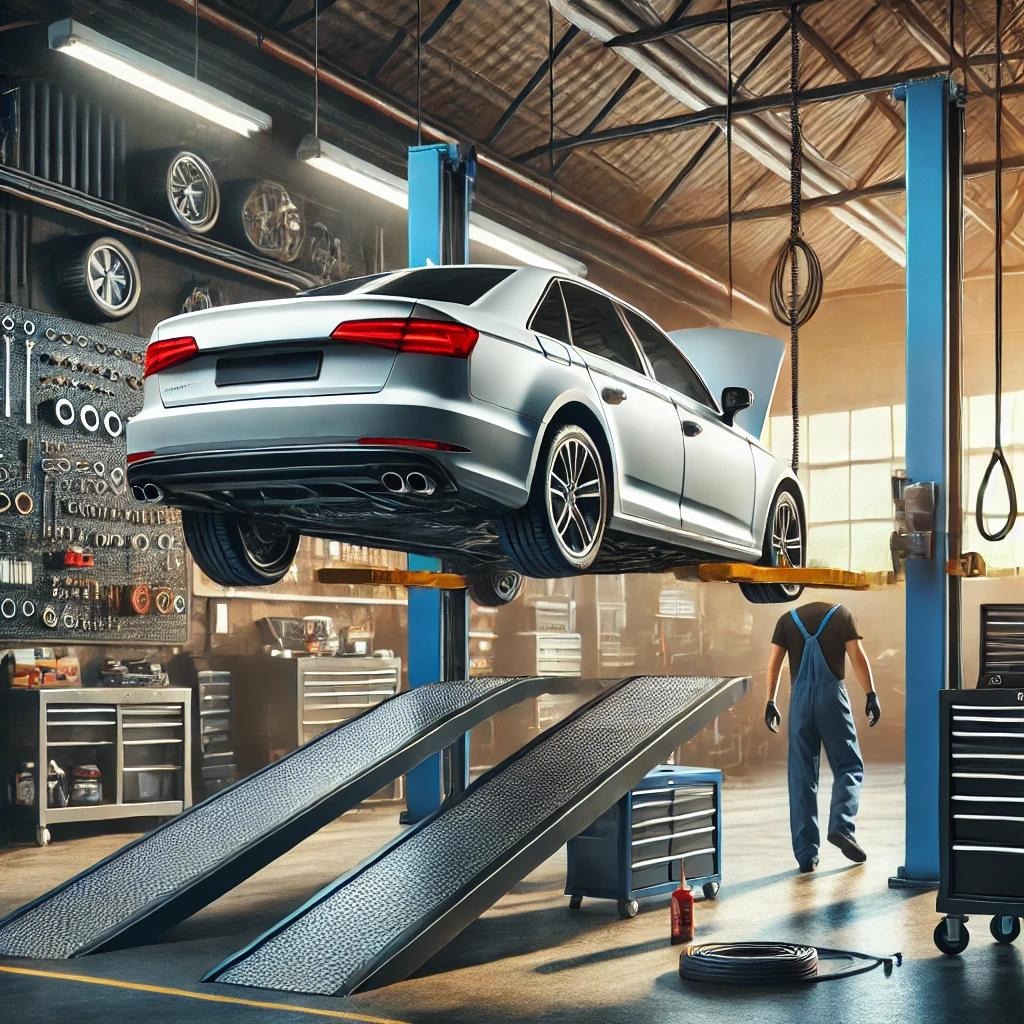The Difference Between Wheel Alignment and Wheel Balancing – Why You Need Both
The Difference Between Wheel Alignment and Wheel Balancing – Why You Need Both
Many drivers assume that wheel alignment and wheel balancing are the same service, but they actually address completely different issues. While both play a crucial role in ensuring your car handles smoothly and safely, knowing the difference can help you understand when you need each service.
At Andrews Car Centre in Lincoln, we provide both wheel alignment and wheel balancing services to keep your car performing at its best. In this article, we’ll explain the key differences, how each service works, and why they are essential for your vehicle’s handling, tyre lifespan, and fuel efficiency.
What Is Wheel Alignment?
Wheel alignment, sometimes referred to as tracking, ensures that your car’s wheels are set to the correct angles according to the manufacturer’s specifications. Misaligned wheels can cause handling issues, uneven tyre wear, and increased fuel consumption.
Signs Your Car Needs Wheel Alignment:
✔️ Your car pulls to one side when driving on a straight road.
✔️ The steering wheel is off-centre even when driving straight.
✔️ Uneven tyre wear – one side of the tyre wears out faster than the other.
✔️ Steering feels loose or unstable.
✔️ After hitting a pothole or curb, your car feels different when driving.
What Happens During a Wheel Alignment?
🔧 A professional wheel alignment adjusts three key angles:
- Toe Angle – Ensures tyres point straight ahead, not inward (toe-in) or outward (toe-out).
- Camber Angle – Adjusts the inward or outward tilt of the wheels.
- Caster Angle – Affects steering stability and responsiveness.
A correct wheel alignment ensures that all four wheels work together properly, improving tyre lifespan, fuel efficiency, and driving comfort.
What Is Wheel Balancing?
Wheel balancing is a separate process that ensures each wheel rotates evenly without causing vibrations. Over time, tyres and wheels develop small weight imbalances due to wear and tear, which can cause a bumpy or shaky ride.
Signs Your Car Needs Wheel Balancing:
✔️ Vibration in the steering wheel at certain speeds.
✔️ Uneven tyre wear, especially in patches.
✔️ Excessive road noise from the tyres.
✔️ A shaky ride, even on smooth roads.
What Happens During Wheel Balancing?
🔧 A technician will:
- Mount each wheel on a balancing machine to detect uneven weight distribution.
- Attach small counterweights to the wheel to evenly distribute weight.
- Ensure the wheel rotates smoothly, reducing vibrations and improving handling.
A well-balanced wheel prevents unnecessary wear on the tyres, suspension, and steering components.
Wheel Alignment vs. Wheel Balancing – What’s the Difference?
| Feature | Wheel Alignment | Wheel Balancing |
|---|---|---|
| Purpose | Adjusts the angles of the wheels to factory specifications. | Ensures wheels spin evenly without vibrations. |
| Symptoms | Pulling to one side, off-centre steering wheel, uneven tyre wear. | Steering wheel vibration, patchy tyre wear, rough ride. |
| How Often Needed? | Every 6,000-10,000 miles or after hitting potholes/kerbs. | Every 5,000-6,000 miles or when changing tyres. |
| Adjustments Made | Toe, camber, and caster angles. | Adds small weights to balance tyre rotation. |
| Effect on Tyres | Prevents uneven wear and extends tyre lifespan. | Stops patchy tread wear and tyre vibrations. |
| Effect on Handling | Improves stability, steering response, and driving safety. | Creates a smoother, more comfortable ride. |
Why You Need Both Wheel Alignment and Wheel Balancing
Many drivers only get one service when their car feels off, but for the best performance, both alignment and balancing should be done together, especially when fitting new tyres or after hitting potholes.
🚗 When should you get wheel alignment?
- After hitting a pothole or curb.
- If you notice pulling to one side.
- If you experience uneven tyre wear.
- After suspension repairs or modifications.
🛞 When should you get wheel balancing?
- If your steering wheel vibrates at high speeds.
- When fitting new tyres.
- If you experience uneven or patchy tyre wear.
- If your car feels shaky or unstable at motorway speeds.
For optimal driving performance, many garages, including Andrews Car Centre in Lincoln, recommend combining both services during routine maintenance.
Why Choose Andrews Car Centre for Wheel Alignment & Balancing in Lincoln?
At Andrews Car Centre, we use state-of-the-art wheel alignment and balancing equipment to ensure your vehicle is safe, efficient, and comfortable to drive.
🔧 Expert Technicians – Our team has years of experience with all makes and models.
📏 Precision 4-Wheel Laser Alignment – Ensuring exact manufacturer specifications.
🛞 Professional Wheel Balancing – Reducing vibrations for a smoother ride.
💰 Affordable & Transparent Pricing – No hidden costs, just honest service.
🚗 Improved Fuel Efficiency & Tyre Life – Save money on fuel and tyre replacements.
Book Your Wheel Alignment & Balancing Today!
Don’t ignore the warning signs—misaligned or unbalanced wheels can lead to poor handling, reduced fuel efficiency, and costly tyre replacements.
📞 Call Andrews Car Centre now or book online to ensure your car’s wheels are perfectly aligned and balanced for a smoother, safer drive.
🚗📏 Andrews Car Centre – Your Trusted Wheel Alignment Experts in Lincoln.

